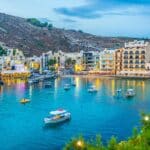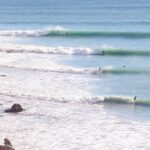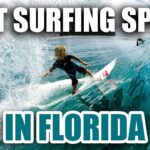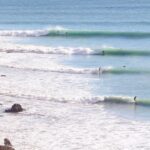Are you wondering about the best surfing destinations in the Mediterranean in Spain? You’re about to find out. Below, we present six exciting surf destinations on the Spanish coast, each with its unique characteristics. From Catalonia to Andalusia, and across the Valencian Community, discover where to catch the best waves on the Spanish Mediterranean coast.
What is the best destination for surfing in the mediterranean in Spain?
Surfing in Sitges, Barcelona
The Waves of the City of Barcelona
We kick off our surf adventure in Sitges, near Barcelona. Local surfers know that this beach, located near the cemetery, is a perfect spot for surfing. Its strategic location, right at the entrance of the harbor, ensures a constant swell, especially when the winds blow from the Northwest, East, or Southeast. This makes it an ideal place for longboarding, even if the waves are not massive; they are consistent. If you prefer not to venture far from the city, you can also find opportunities to surf in La Barceloneta, right in the heart of Barcelona. It is recommended to visit from October to March to avoid the crowds and enjoy long, fast waves. Just a 20-minute drive away, you’ll find Masnou, a perfect option for windy days, as it is more sheltered than other beaches.
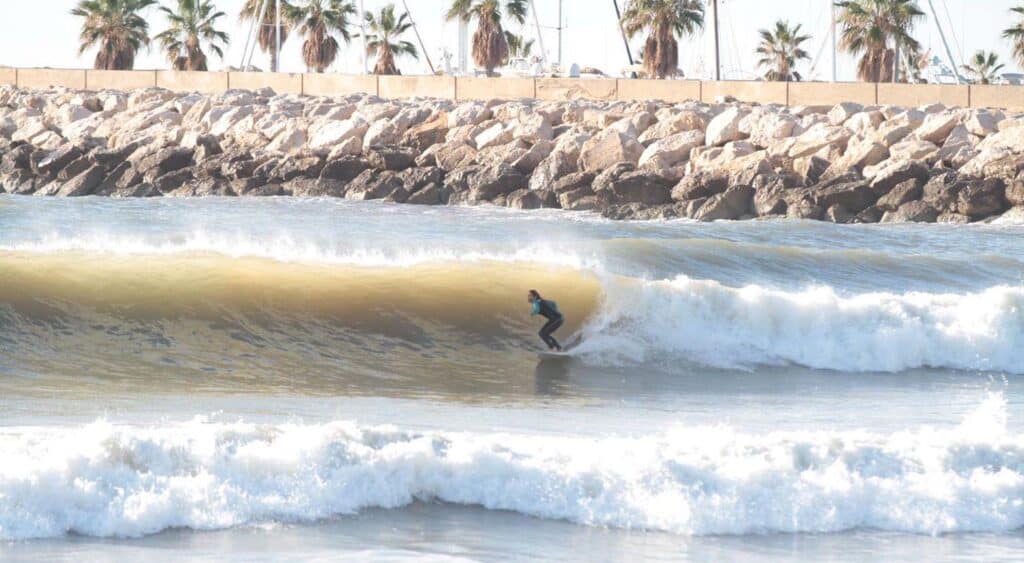
Vilassar de Mar
Another gem for surfers within the province of Barcelona is Vilassar de Mar. Although not advisable for beginners due to the currents, it’s an exciting spot for those looking for a challenge.
Mojácar and Genoveses, Almería
Almería’s Breeze
Almería is another corner of Spain you can’t miss if you’re a surf enthusiast. In the Cabo de Gata Natural Park, Mojácar and Genoveses are two must-visit destinations for a surf trip. In Mojácar, you can enjoy waves of up to two meters in height, thanks to the Levante or Poniente winds. Furthermore, these beaches alternate between rocky and sandy bottoms, making each wave unique. Genoveses, in San José, is the ideal place for those who only understand surfing when surrounded by nature.

Almería Capital
But the fun doesn’t end there. The waves at Guardias Viajes in El Ejido, and those at Punta del Río and El Zapillo in Almería’s capital city, also deserve a spot on the list of the best Mediterranean beaches for surfing.
Cabopino, Marbella, Málaga
Surfing on the Costa del Sol
On the Costa del Sol, you can experience an exciting tube ride. To do this, we recommend heading to Rincón de la Victoria, and, above all, to Cabopino. This beach is perfect for beginners and children, as the waves are moderate. For those seeking excitement on the sea, Huelín or El Castillo in Fuengirola should also be included in your journey along the Malaga coast.

La Chucha, Motril, Granada
More than the Alhambra and Sierra Nevada
Granada is more than just the Alhambra or Sierra Nevada. The Costa Tropical is known for its beaches with fine black sand or pebbles, and some of them have the right conditions for riding the waves. Punta del Río in Salobreña is an exposed area with waves almost every day of the year, with waves ranging from one to one and a half meters. La Chucha beach in Motril is another recommended stop for surf enthusiasts and those looking for less crowded beaches. The waves here vary from moderate to strong, providing challenges for all skill levels.

San Juan and Campello, Alicante
Surfing on the Alicante Coast
In the municipality of Campello, just 10 kilometers from the capital of Alicante, surfing and bodyboarding are deeply ingrained in the culture. Since 2002, they have their surf school where you can learn these sports and rent the necessary equipment if you are new to this or on vacation craving waves. When the winds blow from the east or northwest, it’s perfect. About 20 minutes’ drive away is San Juan beach, an extensive beach of over three kilometers with several areas suitable for surfing. The most recommended is located in front of the former Sidi hotel. In the northern part of the province of Alicante, in Jávea, the Arenal beach stands out, with rocky bottoms that offer unique opportunities.
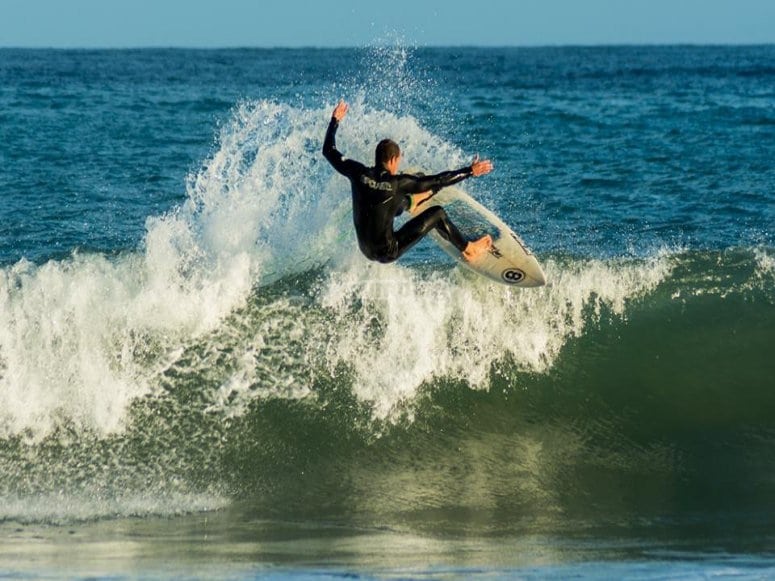
La Patacona and Marenyet, Valencia
Valencians Riding the Waves
Leaving behind Alicante, we head to Valencia, where we find La Patacona, an urban beach with fewer crowds than others in the city, but with the unmistakable scent of paraffin that betrays the fact that exciting sea adventures also take place here. Just a 10-minute drive away is Port Saplaya, in Alboraya, where you can enjoy this sport or have your first experience in their surf school. The same goes for Marenyet in Cullera, an extensive beach of over 1,800 meters located at the mouth of the Júcar River. While the waves here may not be massive, the probability of finding surf is higher than in other Mediterranean areas, with up to 120 days of waves per year.

Now that you know the best surf destinations in the Spanish Mediterranean, all that’s left is to prepare your board and dive into the adventure. Each of these destinations offers a unique and thrilling experience for surfers of all skill levels. So, pick your favorite and get ready to ride the incredible waves of the Spanish Mediterranean!
Frequently Asked Questions (FAQs) About Surfing in the Mediterranean in Spain
Here are some of the most common questions that users have regarding surfing in the Mediterranean in Spain. We’ve provided detailed answers to help you plan your surf adventure effectively.
- What are the best surf destinations in the Mediterranean in Spain? The best surf destinations in the Mediterranean in Spain include Sitges in Barcelona, Mojácar and Genoveses in Almería, Cabopino in Marbella, La Chucha in Motril, and San Juan and Campello in Alicante.
- Is it safe to surf on these beaches? In general, surfing on these beaches is safe, but always pay attention to local conditions and follow the recommendations of lifeguards. Respect local surfing rules and etiquette to ensure safety.
- When is the best time to surf in Spain? The best time to surf in Spain varies by location. In the Costa del Sol, the surf season is typically from September to May. In other areas like Barcelona, surfing is better from October to March. Research the specific region you plan to visit for up-to-date information.
- Do I need prior experience to surf on these beaches? No, you don’t need prior experience to surf on these beaches. There are options for surfers of all skill levels, from beginners to experts. You can take lessons if you’re new to surfing or enjoy the waves if you’re experienced.
- Where can I rent surfboards at these beaches? Most of these beaches have local surf shops and surf schools where you can rent surfboards suitable for your skill level and preferences.
- Are there surf competitions on these beaches? Yes, some of these beaches host surf competitions throughout the year. Stay informed about local events and competition dates to witness the exciting world of surf competitions.
- What equipment do I need for surfing in the Mediterranean? To surf in the Mediterranean, you’ll need a surfboard suitable for your skill level, a wetsuit, surf wax, and, if you’re a beginner, consider taking some surf lessons with experienced instructors.
- What is the water temperature in the Mediterranean? The water temperature in the Mediterranean varies with the season. In winter, it can range from 55°F to 59°F (13°C to 15°C), while in summer, it can rise to around 75°F (24°C). Wearing a wetsuit is recommended during the colder season.
- Where can I find up-to-date information on surf conditions? To get up-to-date information on surf conditions, you can check specialized websites like Magicseaweed, Windy, and Surfline. Additionally, following the social media pages of local surf schools can provide valuable updates.
- What are the alternative activities in these surf destinations? In addition to surfing, these destinations offer a wide range of activities, including hiking, exploring local culture, enjoying the beach, and trying delicious Mediterranean cuisine. You can also visit nearby attractions and historical sites.
Now you have the answers to the most frequently asked questions about surfing in the Mediterranean in Spain. Plan your trip, enjoy the waves, and make the most of your surf adventure.

